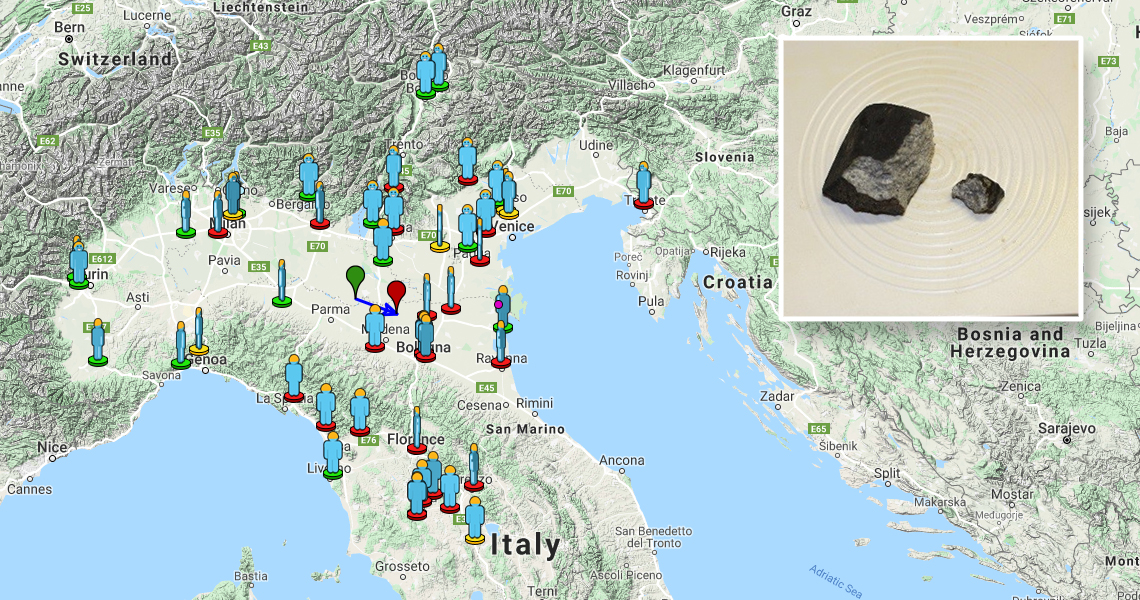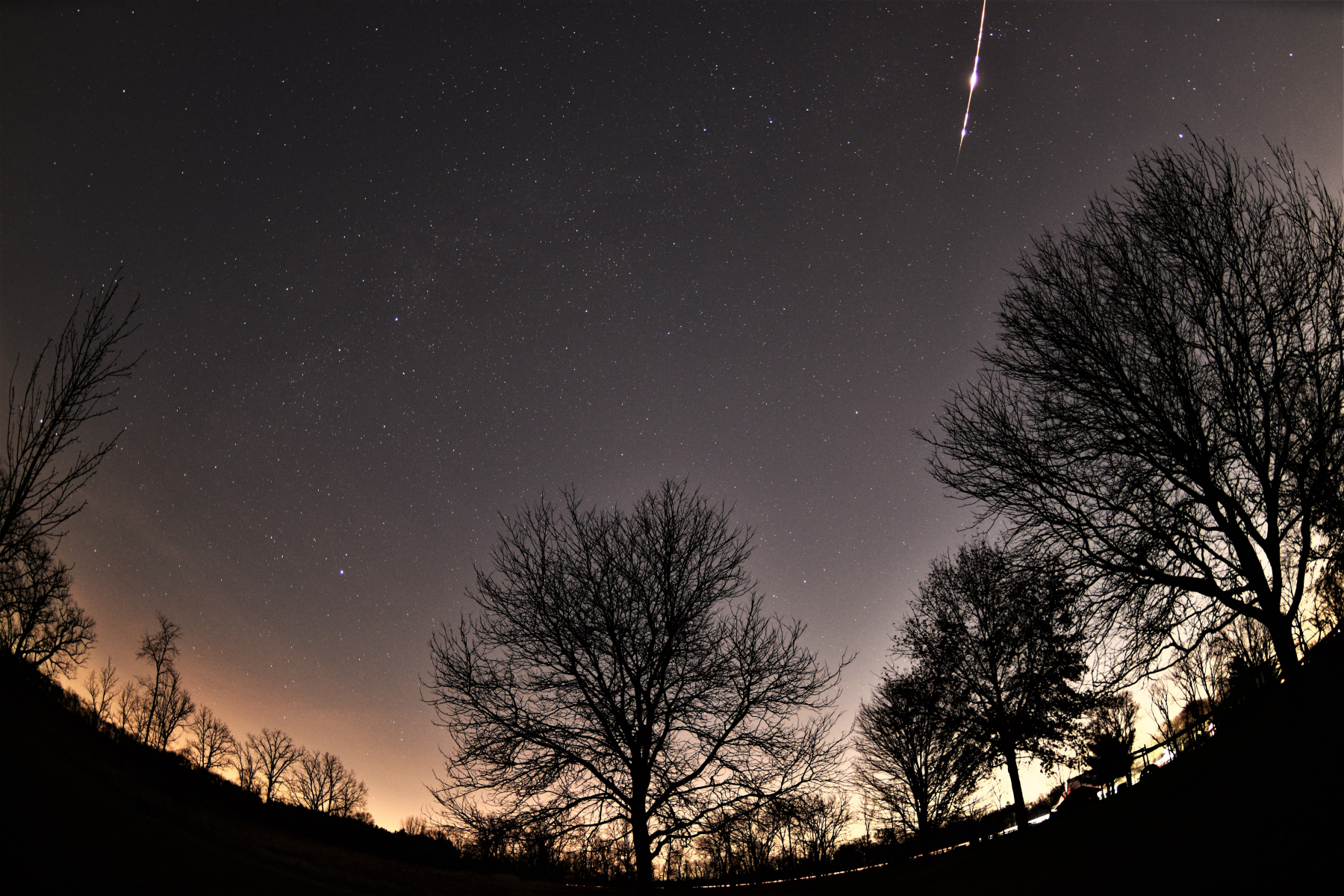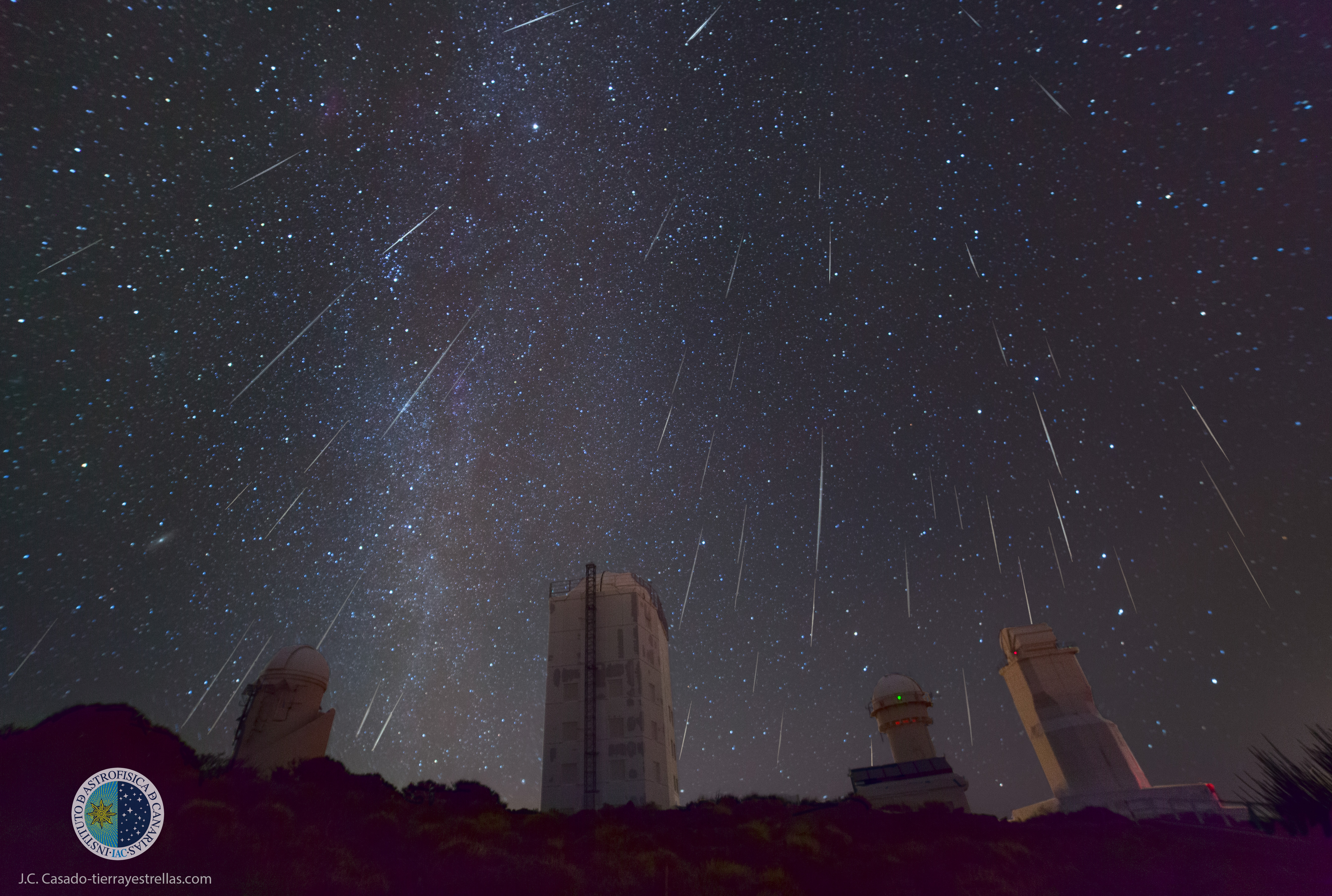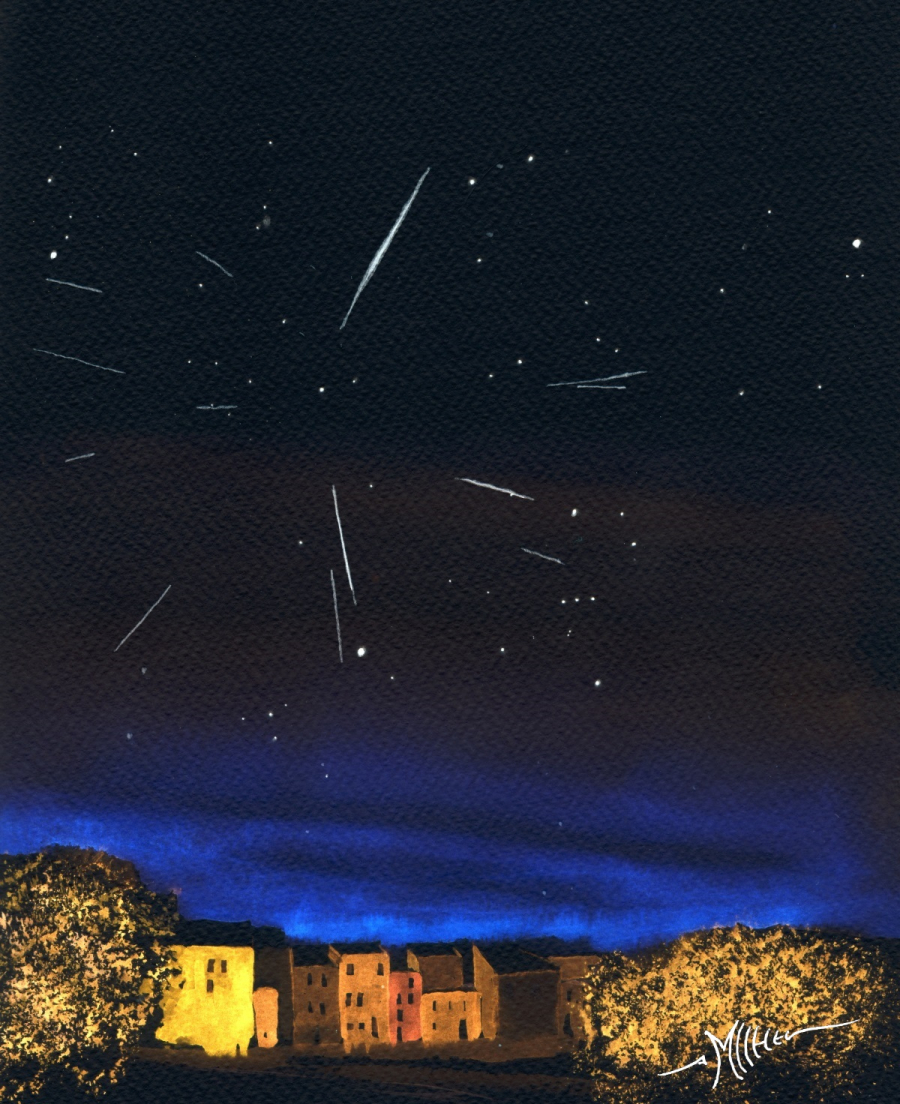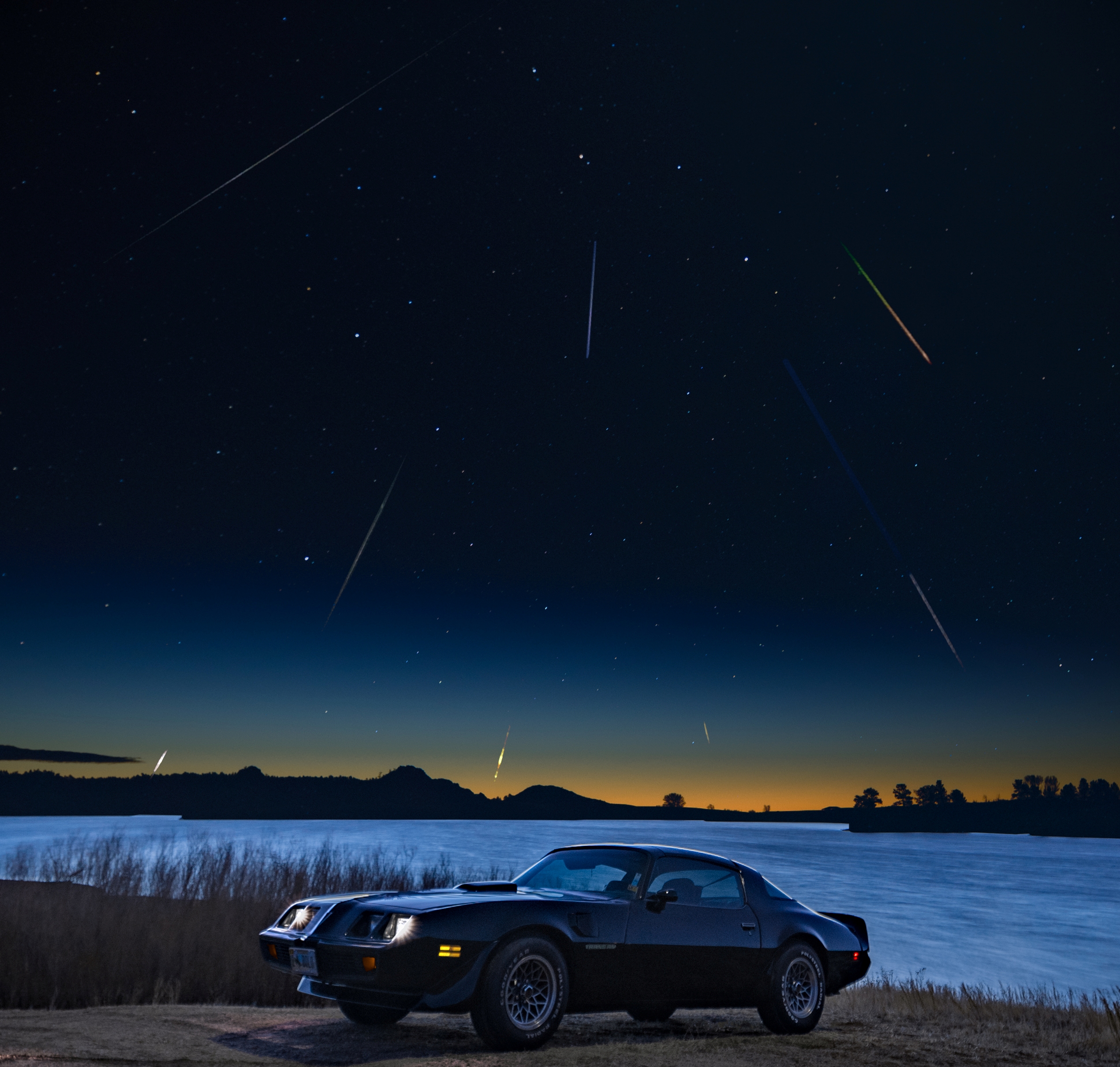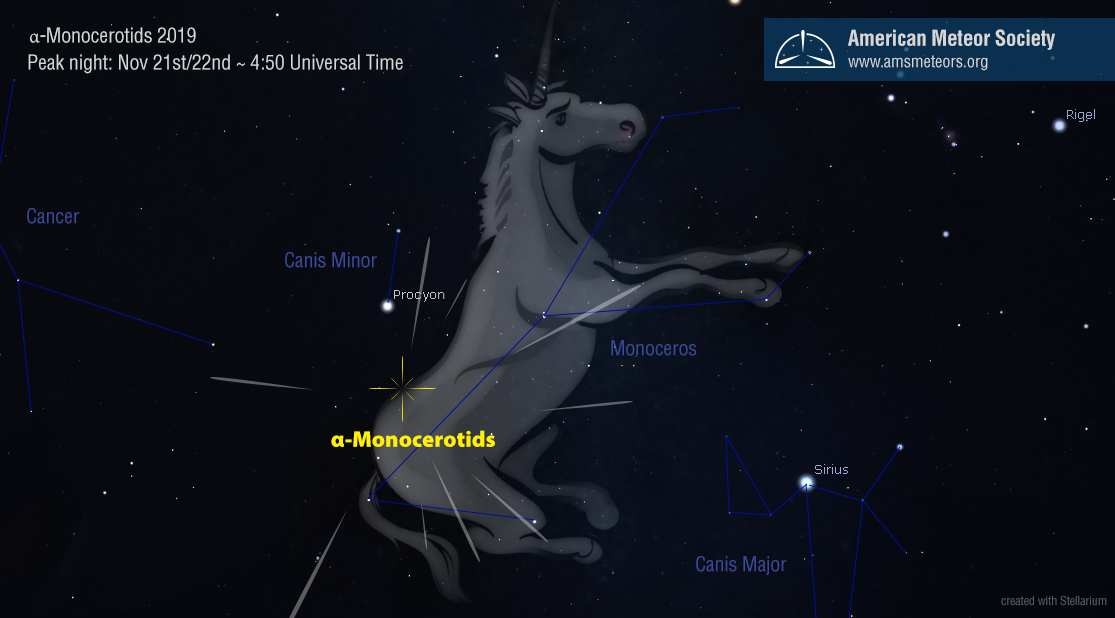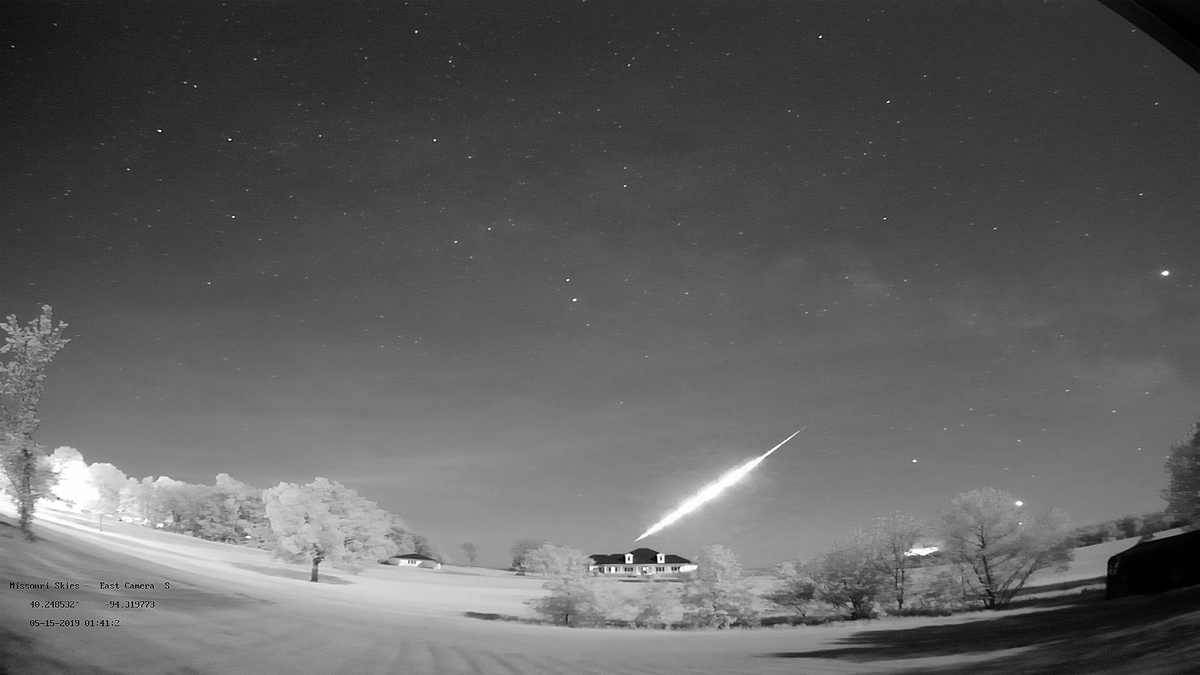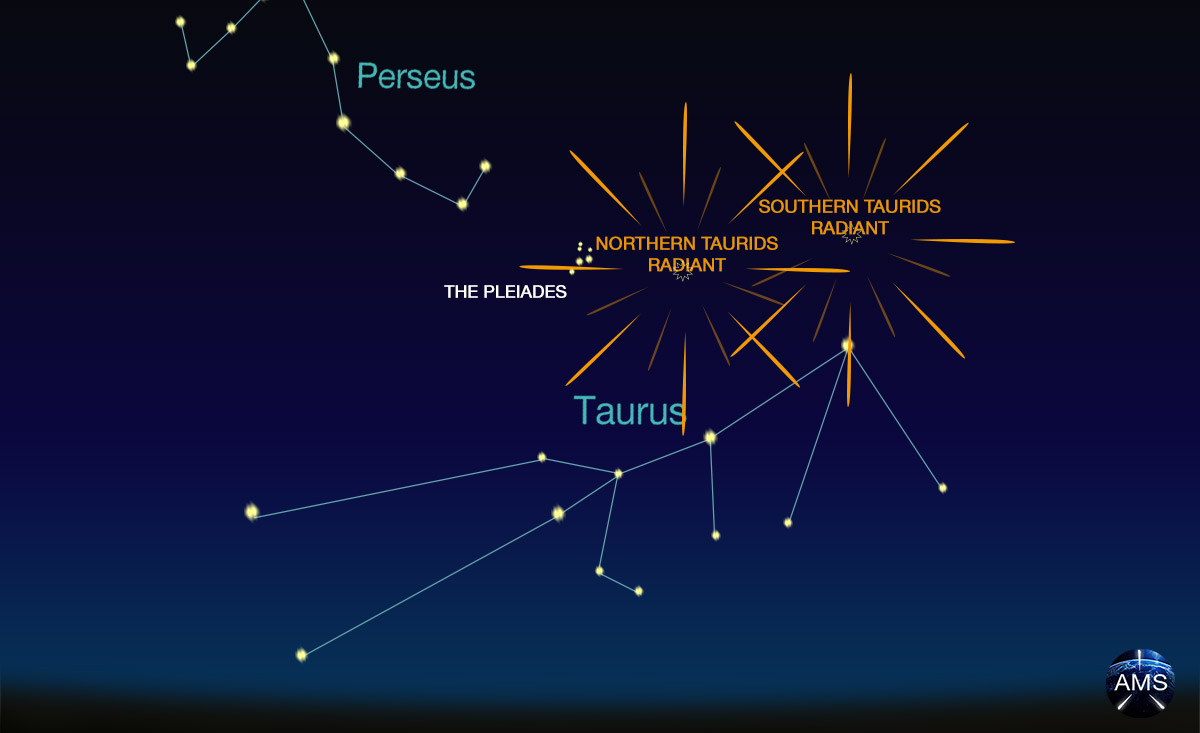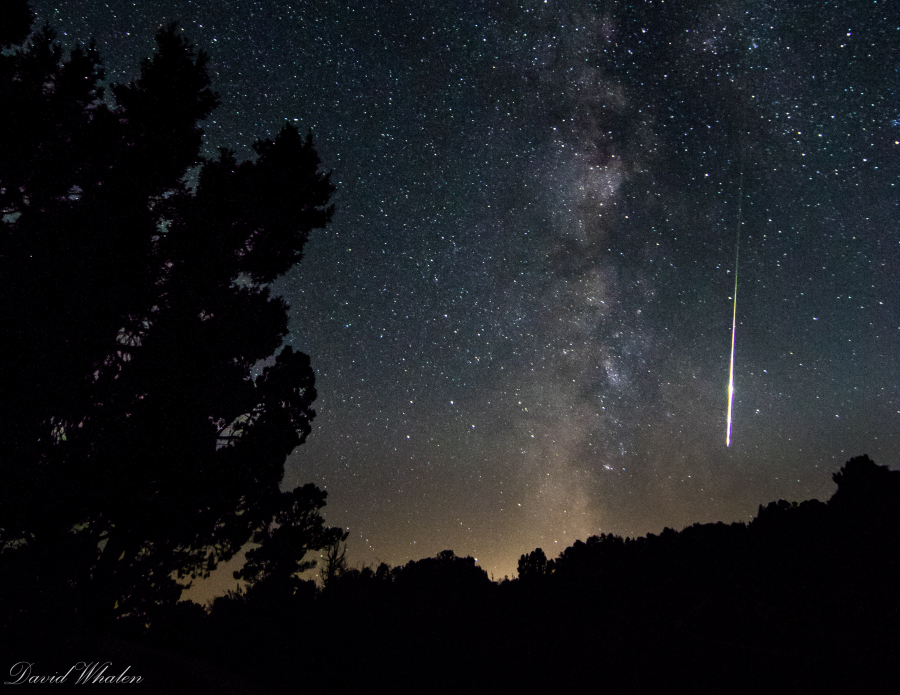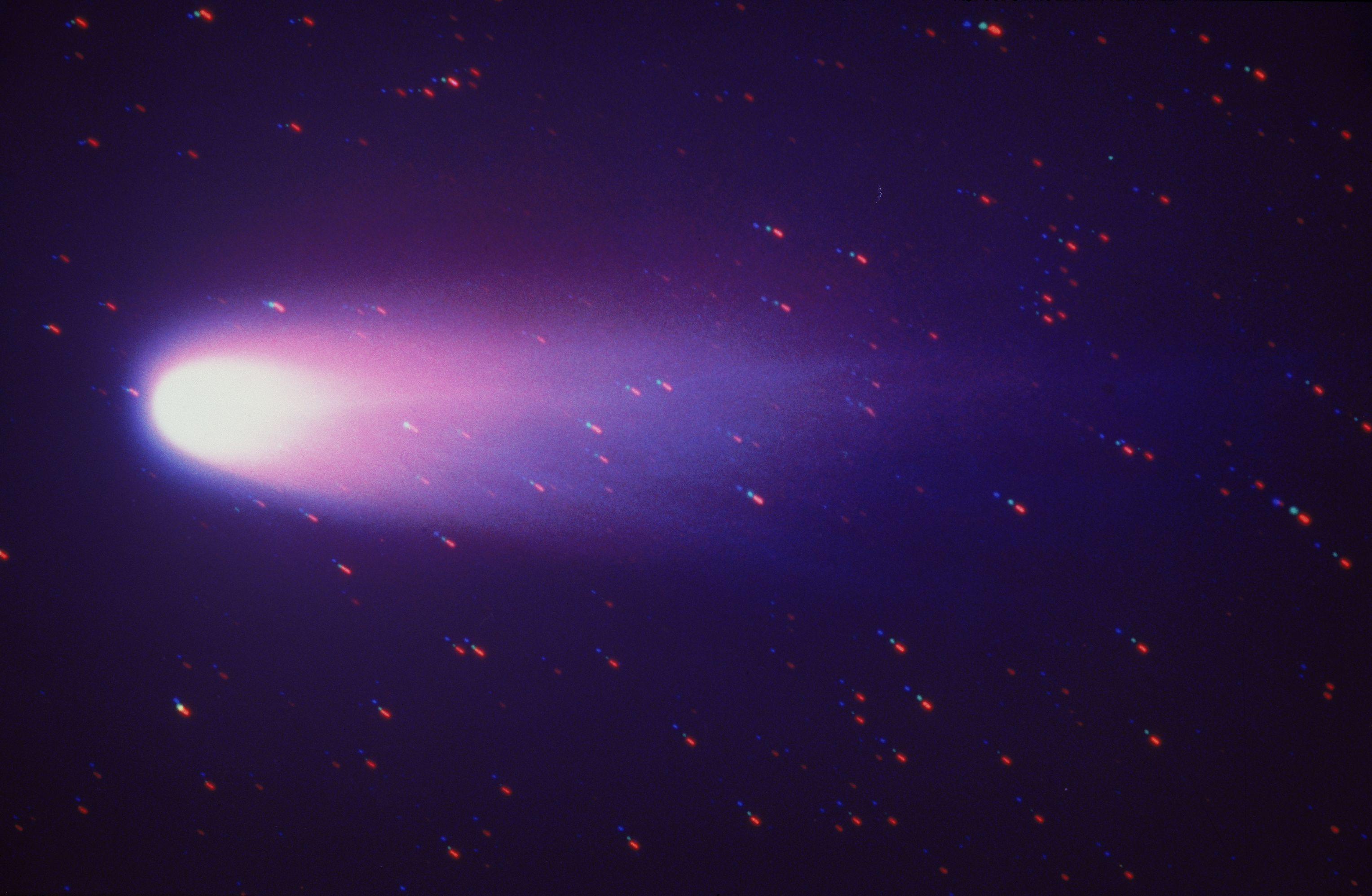
Meteor Activity Outlook for January 18-24 , 2020
During this period the moon reaches its last quarter phase on Saturday January 18th. At this time the half illuminated moon will rise near 0100 local standard time (LST) and will remain in the sky the remainder of the night. Useful meteor observations are possible at this time as long as the bright moon is kept out of your field of view. Lunar conditions will improve with each passing night as the moon wanes and rises later in the morning.
 American Meteor Society
American Meteor Society

